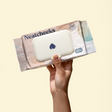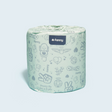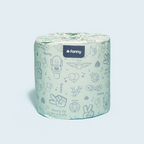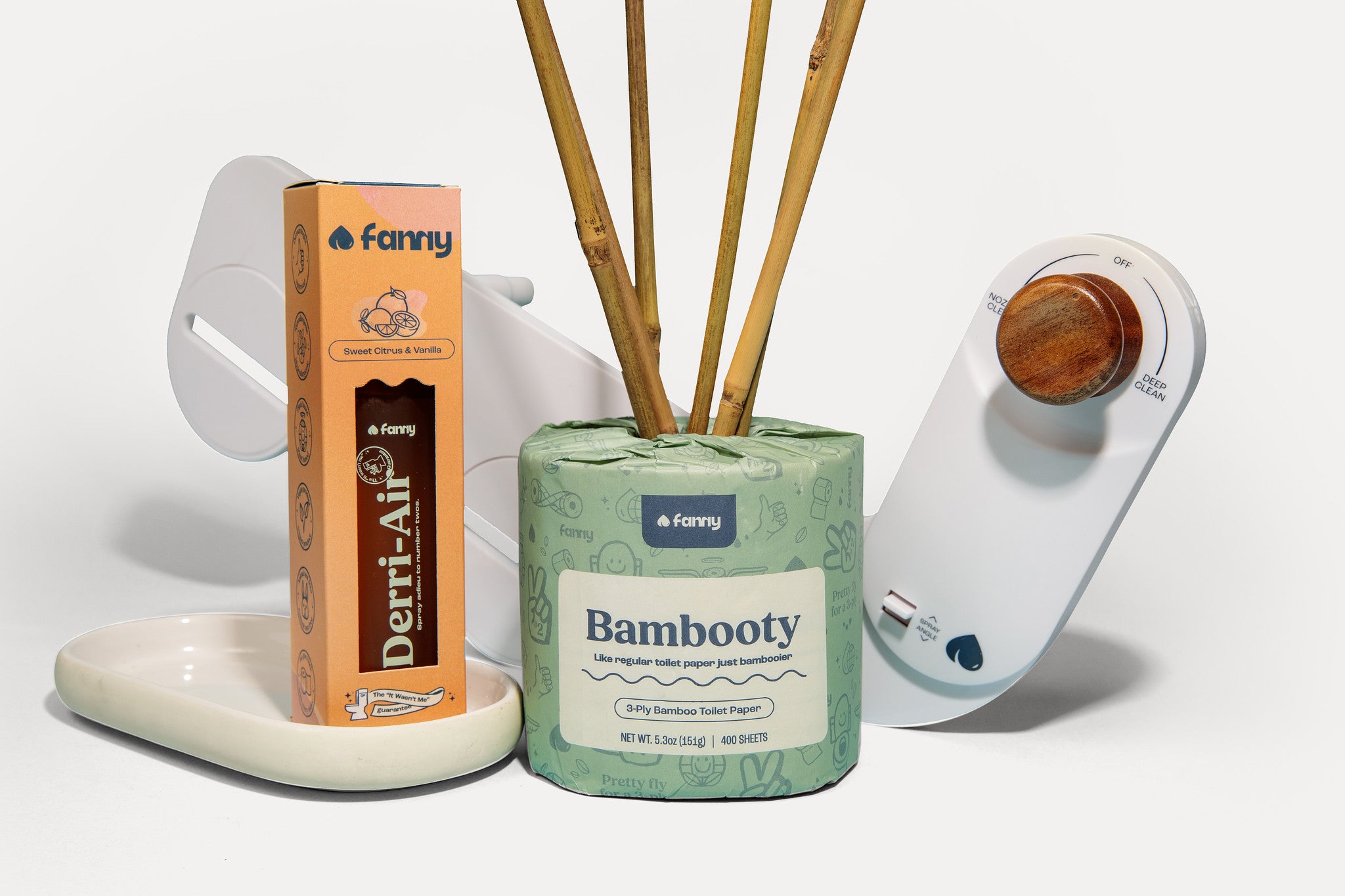The Hidden Dangers of PFAS in Regular Toilet Paper

When you think about toilet paper, your mind likely goes to comfort, convenience, and, well, a basic necessity. But what if we told you that regular toilet paper might be contributing to a much bigger problem, the presence of harmful chemicals known as PFAS (Per- and polyfluoroalkyl substances)? If you’re unfamiliar with PFAS, they are a group of synthetic chemicals used in everything from non-stick cookware to water-repellent clothing and yes, even toilet paper.
While toilet paper might seem like an innocuous item in your bathroom, there’s a growing concern over the potential dangers lurking in your roll. Let's explore what PFAS are, how they end up in regular toilet paper, the risks they pose to your health, and what alternatives exist to keep you and your family safe.
What Are PFAS?
PFAS, often referred to as "forever chemicals," are a large group of man-made substances used for their water- and oil-repellent properties. The two most commonly known PFAS are PFOA (Perfluorooctanoic acid) and PFOS (Perfluorooctane sulfonic acid), but there are thousands of others in the PFAS family. These chemicals are used in a wide variety of products, including:
- Non-stick cookware (Teflon)
- Stain-resistant fabrics (like carpets and upholstery)
- Water-resistant outdoor gear
- Firefighting foam
- Food packaging (such as fast food wrappers and microwave popcorn bags)
PFAS are incredibly stable, meaning they do not break down in the environment or in the human body. Once they enter the ecosystem, they can linger for decades, hence the term “forever chemicals.”
How PFAS End Up in Toilet Paper
So, how do PFAS get into toilet paper? The answer lies in the manufacturing process. Some brands of toilet paper contain PFAS due to the chemicals used to make the paper itself more durable and resistant to moisture. This is particularly true for “luxury” toilet paper brands that market themselves as softer and more resistant to tearing.
In some cases, PFAS are used to create a moisture-resistant barrier that keeps toilet paper from falling apart when wet. This is especially useful in making wipes (often marketed as flushable) more durable. In other cases, the chemicals are used in the manufacturing process to improve the product’s appearance, texture, and overall strength. Unfortunately, as a result, these chemicals can end up in the finished product, which is what you use to wipe after going to the bathroom.
Not all toilet paper brands use PFAS in their production, such as Fanny toilet paper products, but unfortunately, it can be difficult for consumers to tell which products are contaminated, as regulations surrounding this issue are still being developed.
The Health Risks of PFAS
While PFAS are valuable in many industrial applications, they come with significant health risks that have prompted growing concern among environmental and health experts. Here’s a breakdown of some of the dangers they pose:
1. Chemical Build-Up in the Body
One of the most alarming aspects of PFAS is their ability to accumulate in the human body over time. Unlike other chemicals, PFAS don’t break down. As a result, they can build up in tissues and organs, including the liver, kidneys, and blood, which increases the potential for long-term health issues.
2. Cancer Risks
Several studies have linked PFAS exposure to an increased risk of cancer, particularly kidney and testicular cancer. This link is concerning because PFAS are so prevalent in the environment, with high concentrations found in contaminated drinking water, food packaging, and other household items.
3. Hormonal Disruption
PFAS are known to interfere with hormone production and function. Exposure to these chemicals can disrupt thyroid function, and they may also impact the reproductive system. Studies have shown that exposure to PFAS can lower fertility in both men and women and may lead to developmental issues in children.
4. Immune System Impact
Research suggests that PFAS exposure can negatively affect the immune system, reducing the body’s ability to fight infections and possibly lowering vaccine effectiveness. This is especially concerning as we continue to face global health challenges.
5. Environmental Contamination
PFAS contamination isn’t just a problem for humans; it’s a major environmental issue as well. These chemicals are not biodegradable and can contaminate water supplies, soil, and wildlife, causing long-term harm to ecosystems. When PFAS seep into water systems, they can spread over vast areas, impacting communities that rely on local water sources.
Why PFAS in Toilet Paper Is a Problem
You might be thinking, "It’s just toilet paper, how much harm can it really cause?" While it’s true that we don’t consume toilet paper the same way we consume food or water, the chemicals can still pose risks in ways you might not expect. Here's why PFAS in toilet paper is a particular concern:
- Skin Absorption: While the chemicals in toilet paper may not directly enter the bloodstream through digestion, they can be absorbed through the skin. The sensitive areas where toilet paper is applied are more porous, meaning chemicals in the paper could be absorbed, adding to the body’s chemical load.
- Flush and Spread: PFAS in toilet paper may enter wastewater systems and contribute to environmental contamination when flushed. Even though toilet paper is designed to disintegrate, it still may release harmful substances into our water supply.
- Cumulative Exposure: If you’re using PFAS-laced toilet paper along with other common household products that contain PFAS (like non-stick cookware or food packaging), the cumulative exposure could be significant. Over time, the toxins could accumulate in your body and the environment.
What You Can Do to Protect Yourself
The good news is that you have control over the products you buy, and there are ways to minimize your exposure to PFAS in toilet paper.

1. Look for PFAS-Free Brands
Some brands of toilet paper specifically advertise that they are PFAS-free, such as , Fanny toilet paper products, opting for safer alternatives in the manufacturing process. Choosing brands that prioritize safety, sustainability, and non-toxic materials is a great step toward reducing your exposure.
2. Choose Recycled or Bamboo Toilet Paper
Rebooty recycled toilet paper and Bambooty bamboo toilet paper are increasingly popular alternatives to traditional products, and avoid the use of PFAS in their production. Bamboo is naturally biodegradable and doesn’t require harmful chemicals to achieve the softness and strength you’re used to.
3. Be Cautious with Wipes
“Flushable” wipes—whether baby wipes or personal hygiene wipes—are often the biggest offenders when it comes to PFAS contamination. These wipes are sometimes made with water-resistant coatings that can contain PFAS, so it’s best to avoid them or choose brands that explicitly state they are PFAS-free.
4. Stay Informed
As research on PFAS continues, more regulations and transparency in consumer products are expected. Keep an eye on updates from trusted health and environmental organizations regarding new findings or changes to product safety standards.
The Bottom Line
While it might seem surprising that something as simple as toilet paper could pose health risks, the reality is that many everyday products, including toilet paper, can carry harmful chemicals like PFAS. These chemicals are linked to serious health problems and environmental damage, and their widespread use in manufacturing is a concern we can no longer ignore.
By choosing PFAS-free, Rebooty recycled, or Bambooty bamboo-based toilet paper, you can make a meaningful difference in protecting both your health and the planet. As consumers, we have the power to demand safer alternatives, and choosing eco-friendly products is one of the easiest ways to make that change.
Making the switch to PFAS-free toilet paper is a small, but impactful, step toward a healthier, more sustainable future, for both you, your family, and the environment.











